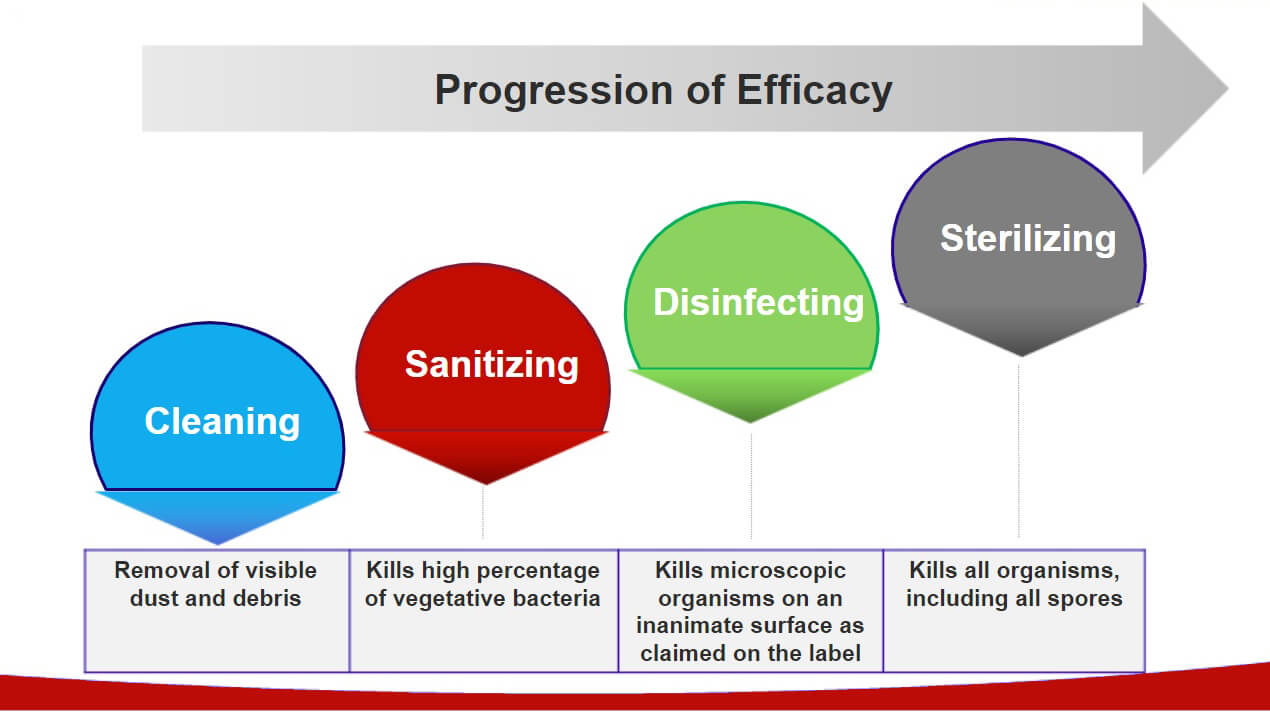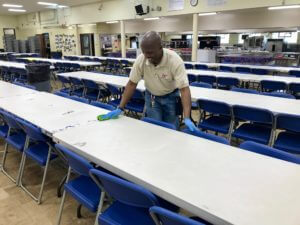The want and need for sanitizing and disinfecting surfaces has drastically increased in recent years in order to take proactive measures to keep yourself and your workforce healthy. However it is important to know the differences in the processes and chemicals for each procedure.
Not sure where to start? That’s where C.M. Cleaning and our trained staff can help! When thinking of preventing illness from a cleaning standpoint, often words that come to mind are “disinfect” and “sanitize”. The issue is that these words are often used interchangeably. While they do have similarities, they are used for different applications.
- Sanitization: Significantly reduces the overall parthenogenic microbes and bacteria on a surface, thus reducing the chances of getting sick.
- Disinfection: Almost completely reduces the parthenogenic microbes and bacteria on a surface. Disinfectants require dwell time to be effective against the microbes they advertise to eliminate and for this reason are more effective than sanitizers.
- Sterilization: The process of decontamination by utilizing a combination of chemical application, heat, and/or pressure to eliminate any and all parthenogenic microbes and bacteria on a surface.
Disinfection, sanitization, and sterilization are all processes of decontamination, however, they differ in application and effect. Sanitizers reduce the overall number of parthenogenic microbes (the microorganisms that make us sick), on an inanimate or living surface. Sanitizers have a more broad and immediate use against a wide range of microbes to reduce the overall number of microbes on a surface, thus reducing the chances of illness.
A disinfectant has a stronger effect than a sanitizer on certain parthenogenic microbes. Disinfectants normally have a more focused and specific use against certain bacteria, viruses, and disease. Disinfectants also require a “dwell time” to be effective, meaning they must remain on an inanimate surface for a certain period of time to be effective against the advertised microbe(s). Additionally, Disinfectant are effective on inanimate surfaces. However, many disinfectants are weakened by organic matter such as living tissue, or feces. To summarize, disinfectants can be stronger than sanitizers, but require a more specific and meticulous application to be effective.

Finally, Sterilization utilizes chemical application to decontaminate, but additionally incorporates heat and/or pressure to completely eliminate any and all parthenogenic microbes. For example, here at C.M. Cleaning we offer “Roto-Vac” service for ceramic tile, a flooring product often used in bathrooms. This process sterilizes a restroom floor by using a combination of chemical (with dwell time), as well as water heated to 250 degrees Fahrenheit and dispensed onto the floor at 900 PSI. the water is then extracted from the floor simultaneously, leaving the floor completely clean and sanitized.
If your place of business is in need of proactive measures this cold & flu season, call the professionals at C.M. Cleaning Company to tailor a solution to your specific needs!




